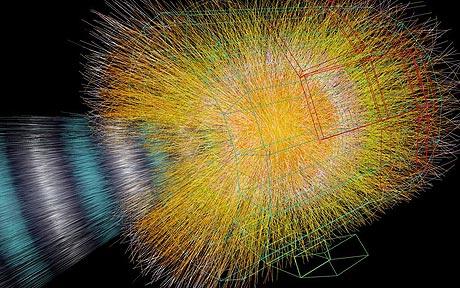 LHC is reporting some major developments today. The latest report said that The Large Hadron Collider has successfully created a “mini Big-Bang”. This was done by smashing together lead ions instead of protons as it was done earlier. The mini Big-bangs were achieved on November 7th which created temperatures a million times hotter than the center of the Sun.
LHC is reporting some major developments today. The latest report said that The Large Hadron Collider has successfully created a “mini Big-Bang”. This was done by smashing together lead ions instead of protons as it was done earlier. The mini Big-bangs were achieved on November 7th which created temperatures a million times hotter than the center of the Sun.
LHC is the world’s highest-energy particle accelerator, has been colliding protons and scientists believed that it would help uncover the Universe’s mysteries. But after this latest discovery, scientists will focus on analysing the data obtained by the lead ion collisions. Scientists say that this will lead to learning more about the plasma that was formed a millionth of a second after the Big Bang.
ALICE, one of the accelerator’s experiments was designed to smash lead ions. One of the researchers, David Evans, said that the collisions obtained were able to generate the highest temperatures and desities ever produced in any experiment. He said, “This process took place in a safe, controlled environment, generating incredibly hot and dense sub-atomic fireballs with temperatures of over ten trillion degrees, a million times hotter than the centre of the Sun. At these temperatures even protons and neutrons, which make up the nuclei of atoms, melt resulting in a hot dense soup of quarks and gluons known as a quark-gluon plasma.”
Building blocks of matter include Quarks and gluons and in a state known as quark-gluon plasma, they are freed of their attraction to one another. This plasma is believed to have existed just after the Big Bang. Scientists said after the LHC finishes colliding lead ions it is scheduled to go back to smashing together protons once again.

This will all end in one big ball of fire, and they really do not care
[…] Read more here and here. […]